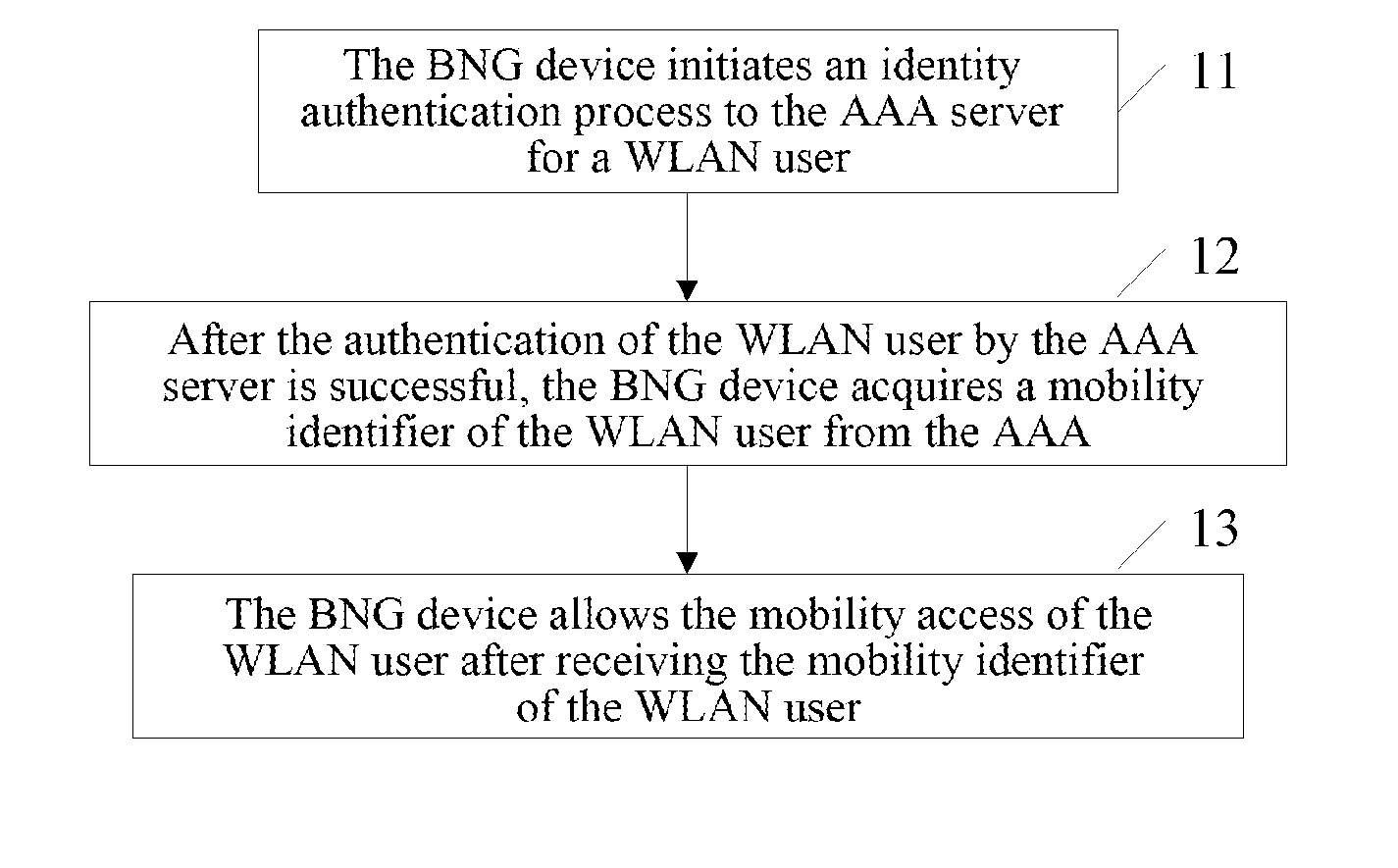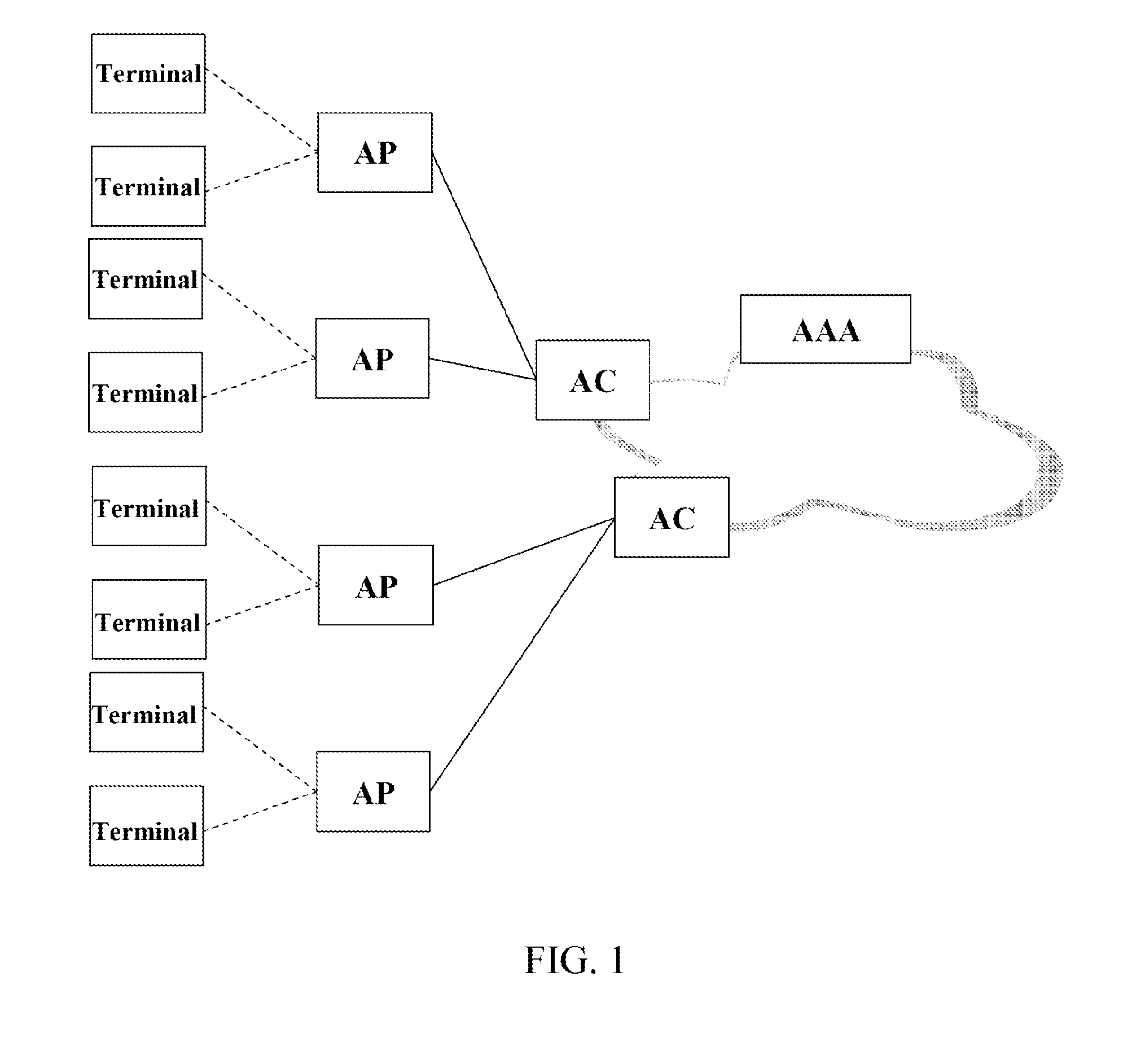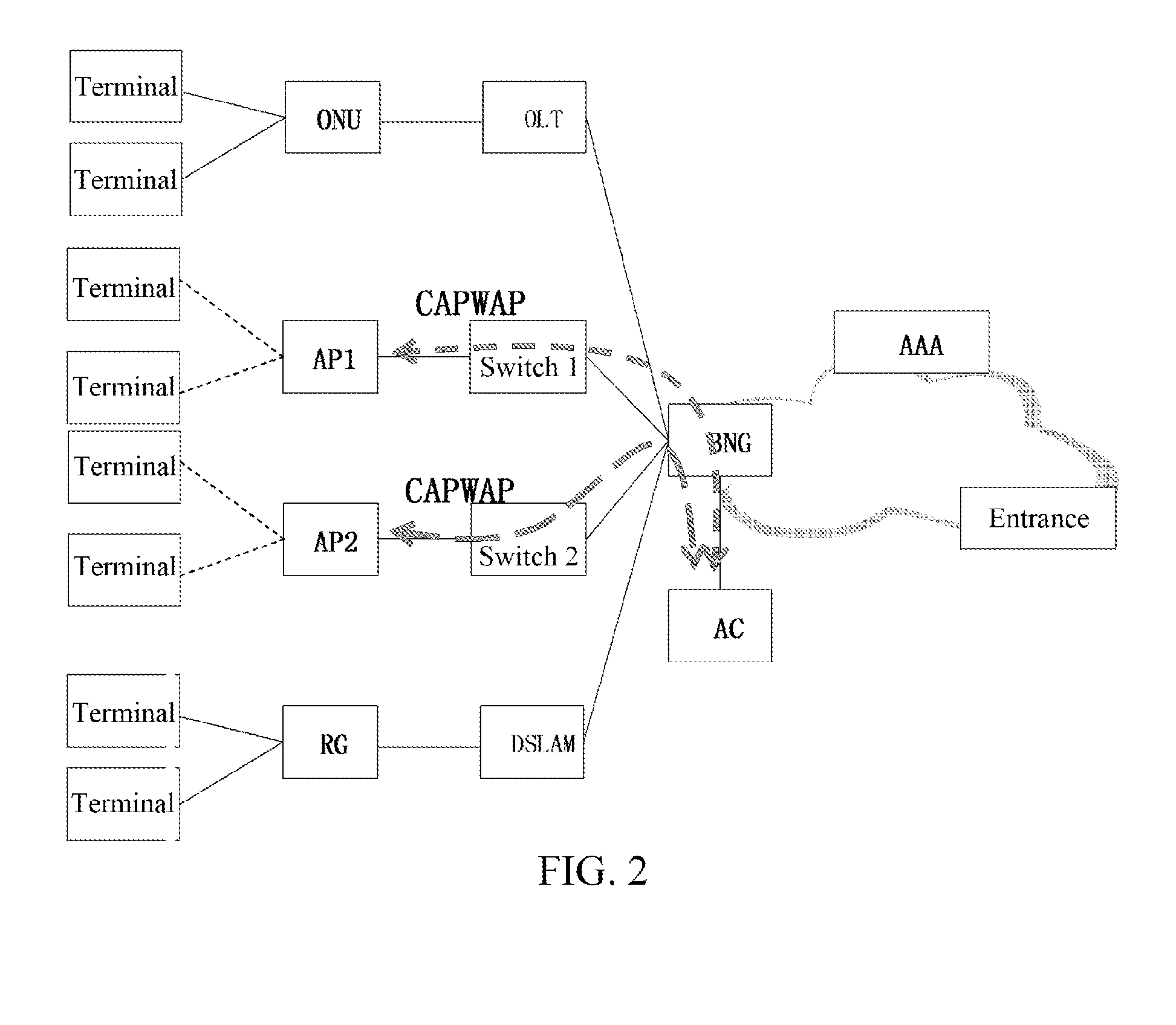Method and system for wireless local area network user to access fixed broadband network
a wireless local area network and fixed broadband technology, applied in the field of communication, can solve the problems of inability to effectively distinguish and provide the mobility access capability of wlan users
- Summary
- Abstract
- Description
- Claims
- Application Information
AI Technical Summary
Benefits of technology
Problems solved by technology
Method used
Image
Examples
first embodiment
The First Embodiment
[0077]As shown in FIG. 5, the AP is connected to the AC / AC cloud via the BRAS device, the AC / AC cloud controls that packets of the AP are forwarded through the BRAS, the packet of the user for accessing the network side does not go through the AC. The user is authenticated via the EAP MD5, and obtains an IP address via the DHCP. As shown in FIG. 6, the following are included.
[0078]In step 301, configure the AP device as a remote authentication dial-in user service (Radius) client, and configure the address of a broadband remote access server (BRAS) as the address of the AP's Radius Server.
[0079]In step 302, configure the BRAS as a Radius Client, and configure the AAA device as the BRAS's Radius Server.
[0080]In step 303, the user terminal sends an EAPoL-Start request to the AP1.
[0081]In step 304, the AP1 sends an EAP-Request / Identity message to the user terminal after receiving the EAPol-Start message, and requires the user terminal to send the user name to the AP...
second embodiment
The Second Embodiment
[0097]As shown in FIG. 7, the AP and the AC are connected with each other via the SR device, the AC controls to forward the AP packet via the SR, the packets of the user accessing the network side do not go through the AC. The user obtains the address via the DHCP protocol and authenticates via the Portal protocol, the SR1 and the SR2 are mutual backups of each other. As shown in FIG. 8, the following steps are comprised.
[0098]In step 401, the user terminal obtains an IP address from the SR1 through the DHCP protocol, and the DHCP packets are forwarded through the AP 1.
[0099]In step 402, before the authentication, the packets of the user terminal accessing the network side pass through the SR1 device and are redirected to the Portal server.
[0100]In step 403, the user authentication is performed between the user terminal, the Portal Server, the SR1 and the AAA through the Portal authentication / Web authentication process. Wherein, the AAA judges whether the user i...
third embodiment
The Third Embodiment
[0105]As shown in FIG. 9, the AP and the AC are connected with each other via the SR device, the AC controls the AP packet to be forwarded via the SR, the packet of the user accessing the network side does not go through the AC. The user obtains an address through the PPPoE authentication, and a plurality of BRAS devices are formed into a BRAS Pool or a BRAS Cloud. As shown in FIG. 10, the following steps are comprised.
[0106]In step 501, the user terminal accesses via the PPPoE mode and performs the PPPoE negotiation (negotiating the PPPoE Session ID) and the PPP LCP negotiation (negotiating the authentication mode) with the BRAS1.
[0107]In step 502, the user terminal and the BRAS1 device enter into the PPP authentication phase, the user identification information is authenticated completely between the BRAS1 and the AAA; the AAA judges whether the user is legitimate or not based on the user name and the password, and judges whether to provide the mobility access ...
PUM
 Login to View More
Login to View More Abstract
Description
Claims
Application Information
 Login to View More
Login to View More - R&D
- Intellectual Property
- Life Sciences
- Materials
- Tech Scout
- Unparalleled Data Quality
- Higher Quality Content
- 60% Fewer Hallucinations
Browse by: Latest US Patents, China's latest patents, Technical Efficacy Thesaurus, Application Domain, Technology Topic, Popular Technical Reports.
© 2025 PatSnap. All rights reserved.Legal|Privacy policy|Modern Slavery Act Transparency Statement|Sitemap|About US| Contact US: help@patsnap.com



